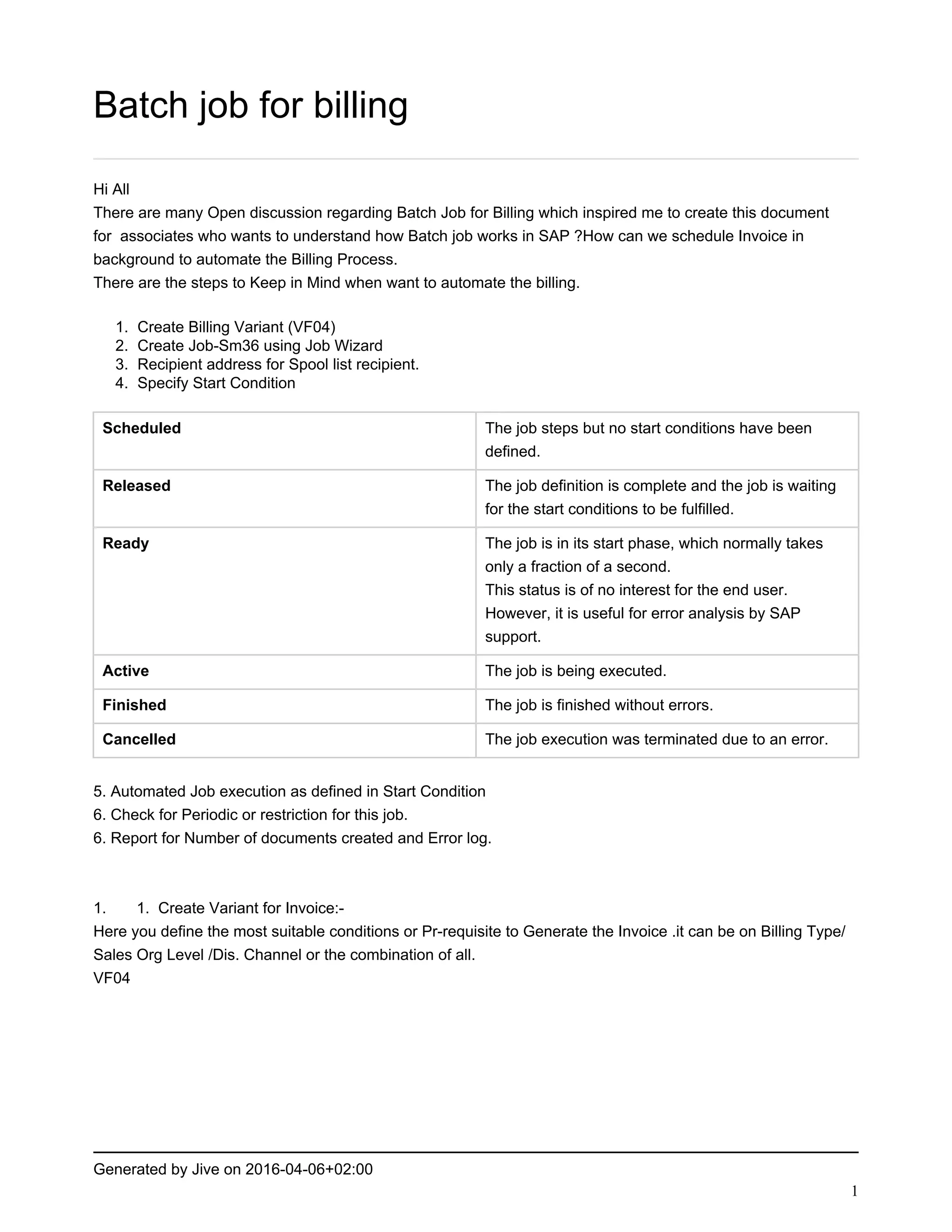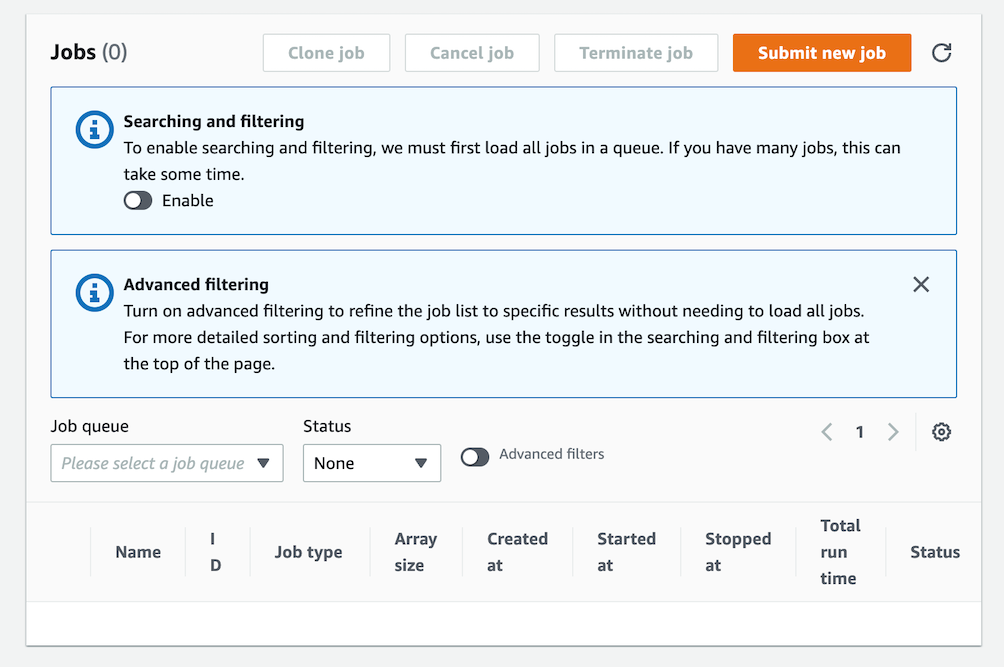Hey there, tech enthusiasts! If you're diving into the world of IoT (Internet of Things) and wondering how to handle data processing efficiently, you've come to the right place. RemoteIoT batch job examples are the key to unlocking powerful data management techniques. Whether you're a developer or a tech-savvy individual, understanding how batch jobs work in IoT can transform the way you handle large-scale data operations.
Let's face it—IoT devices generate a ton of data. From smart homes to industrial sensors, the amount of information pouring in is overwhelming. But don't panic! With remote IoT batch job examples, you can streamline your data processing and make it work for you. This guide will walk you through everything you need to know about batch processing in IoT, breaking it down into easy-to-understand chunks.
We'll cover everything from the basics of batch jobs to advanced techniques that'll take your IoT projects to the next level. So, grab a cup of coffee, sit back, and let's dive into the fascinating world of remote IoT batch job examples. Trust me, by the end of this, you'll be a pro!
Read also:Julia Filippo Onlyfans Leak The Truth Behind The Controversy
What Exactly is RemoteIoT Batch Job?
Alright, let's start with the basics. A remote IoT batch job is essentially a process that handles large amounts of data in chunks. Instead of processing data in real-time, which can be resource-intensive, batch jobs collect data over a period and process it all at once. This method is super efficient for IoT systems where data volume is massive.
Batch jobs are like your go-to strategy for managing data overload. Imagine having thousands of sensors sending data every second. Real-time processing would require a ton of computing power. But with batch processing, you schedule the data to be processed during off-peak hours, saving resources and costs.
Here's a quick breakdown of why batch jobs are awesome:
- Efficient use of resources
- Reduced latency for non-critical tasks
- Cost-effective for large-scale data processing
- Perfect for analyzing historical data trends
Why RemoteIoT Batch Job Example Matters
Now, you might be wondering, "Why should I care about batch job examples?" Well, here's the deal. Examples are the best way to learn and apply concepts in real-world scenarios. By studying remote IoT batch job examples, you can understand how to implement batch processing in your own projects.
For instance, if you're working on a smart agriculture system, you could use batch jobs to analyze soil moisture data collected over a week. Or, if you're monitoring industrial equipment, batch processing can help you identify patterns and predict maintenance needs. These examples not only teach you the theory but also show you how to put it into practice.
Getting Started with RemoteIoT Batch Processing
Before we dive deeper, let's talk about the tools and technologies you'll need to get started with remote IoT batch processing. There are several platforms and frameworks available that make batch processing a breeze. Some of the most popular ones include:
Read also:Emerson Normand Carville A Rising Star In The World Of Entertainment
- Apache Hadoop
- Apache Spark
- Google Cloud Dataflow
- AWS Batch
Each of these tools has its own strengths, so the choice depends on your specific requirements. For example, if you're dealing with massive datasets, Apache Hadoop might be the way to go. But if you need speed and flexibility, Apache Spark could be your best bet.
Choosing the Right Platform
Selecting the right platform for your batch processing needs is crucial. Consider factors like scalability, ease of use, and integration with your existing systems. You don't want to end up with a tool that slows down your operations or requires a ton of customization.
Here's a quick tip: Start small. Try out a few platforms with sample datasets to see which one works best for you. This approach will save you time and headaches in the long run.
RemoteIoT Batch Job Example in Action
Let's take a look at a real-world example to see how remote IoT batch jobs work in action. Imagine you're working on a smart traffic management system. Sensors installed on roads collect data about vehicle movement, traffic density, and road conditions. With batch processing, you can analyze this data overnight and generate reports that help city planners optimize traffic flow.
This example highlights the power of batch jobs in handling large-scale data operations. By processing data in batches, you can ensure that your system remains efficient and responsive, even during peak traffic hours.
Steps to Implement a Batch Job
Implementing a remote IoT batch job involves a few key steps:
- Collect data from IoT devices
- Store the data in a database or data lake
- Schedule the batch job to run at a specific time
- Process the data using the chosen platform
- Generate insights or reports based on the processed data
Following these steps will help you set up a robust batch processing system for your IoT projects.
Best Practices for RemoteIoT Batch Processing
Now that you know the basics, let's talk about some best practices to ensure your batch processing system runs smoothly:
- Regularly monitor system performance to identify bottlenecks
- Optimize your queries to reduce processing time
- Implement error handling to deal with unexpected issues
- Use compression techniques to save storage space
These practices will help you maintain a reliable and efficient batch processing system, even as your data volume grows.
Overcoming Challenges in RemoteIoT Batch Job
Of course, like any technology, remote IoT batch processing comes with its own set of challenges. Some common issues include data latency, resource constraints, and integration with existing systems. But don't worry! These challenges can be overcome with the right strategies.
For example, to address data latency, you can implement a hybrid approach that combines batch and real-time processing. This way, you can handle critical tasks in real-time while using batch processing for non-critical tasks.
Resource Management Tips
Managing resources efficiently is key to successful batch processing. Here are a few tips:
- Use cloud-based platforms for scalability
- Optimize your code to reduce resource consumption
- Monitor resource usage regularly to identify areas for improvement
By following these tips, you can ensure that your batch processing system runs smoothly without consuming excessive resources.
Real-World Applications of RemoteIoT Batch Job
Remote IoT batch jobs have a wide range of applications across various industries. Let's take a look at some real-world examples:
- Healthcare: Analyzing patient data to identify trends and improve treatment outcomes
- Retail: Processing sales data to optimize inventory management
- Manufacturing: Monitoring production lines to identify inefficiencies
These applications demonstrate the versatility and power of remote IoT batch processing in solving real-world problems.
Future Trends in RemoteIoT Batch Processing
As technology continues to evolve, so does the field of remote IoT batch processing. Some exciting trends to watch out for include:
- Edge computing: Processing data closer to the source for faster insights
- Artificial intelligence: Using AI to enhance batch processing capabilities
- Blockchain: Ensuring data integrity and security in batch processing
These trends will shape the future of remote IoT batch processing, offering new possibilities and opportunities for innovation.
Conclusion
Well, there you have it—a comprehensive guide to remote IoT batch job examples. From understanding the basics to exploring real-world applications, we've covered everything you need to know to master batch processing in IoT. Remember, the key to success lies in choosing the right tools, following best practices, and staying up-to-date with the latest trends.
So, what are you waiting for? Start experimenting with batch jobs and take your IoT projects to the next level. And don't forget to share your experiences and insights with us. Your feedback is valuable and helps us improve our content. Happy coding!
Table of Contents
- What Exactly is RemoteIoT Batch Job?
- Why RemoteIoT Batch Job Example Matters
- Getting Started with RemoteIoT Batch Processing
- Choosing the Right Platform
- RemoteIoT Batch Job Example in Action
- Steps to Implement a Batch Job
- Best Practices for RemoteIoT Batch Processing
- Overcoming Challenges in RemoteIoT Batch Job
- Resource Management Tips
- Real-World Applications of RemoteIoT Batch Job
- Future Trends in RemoteIoT Batch Processing


